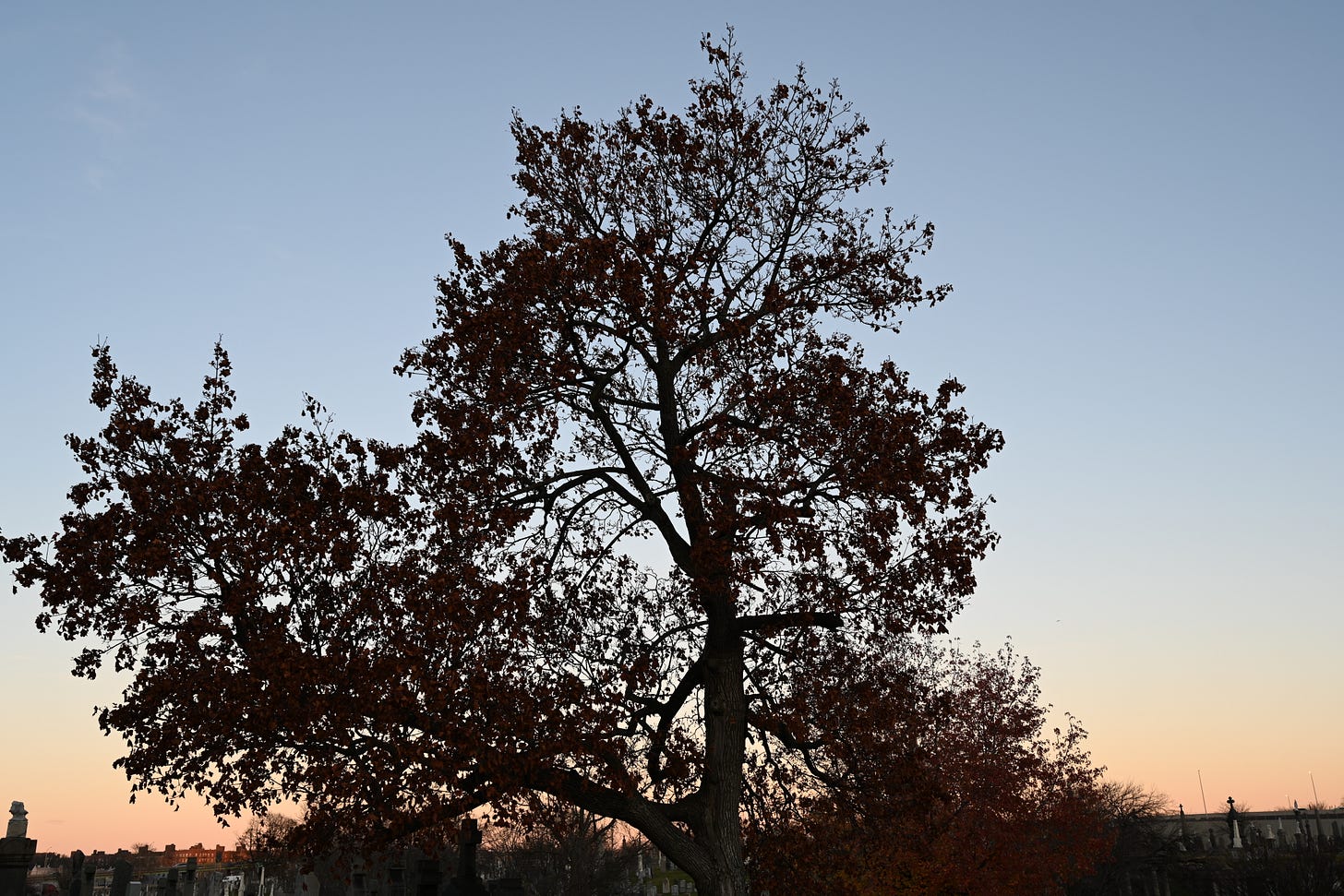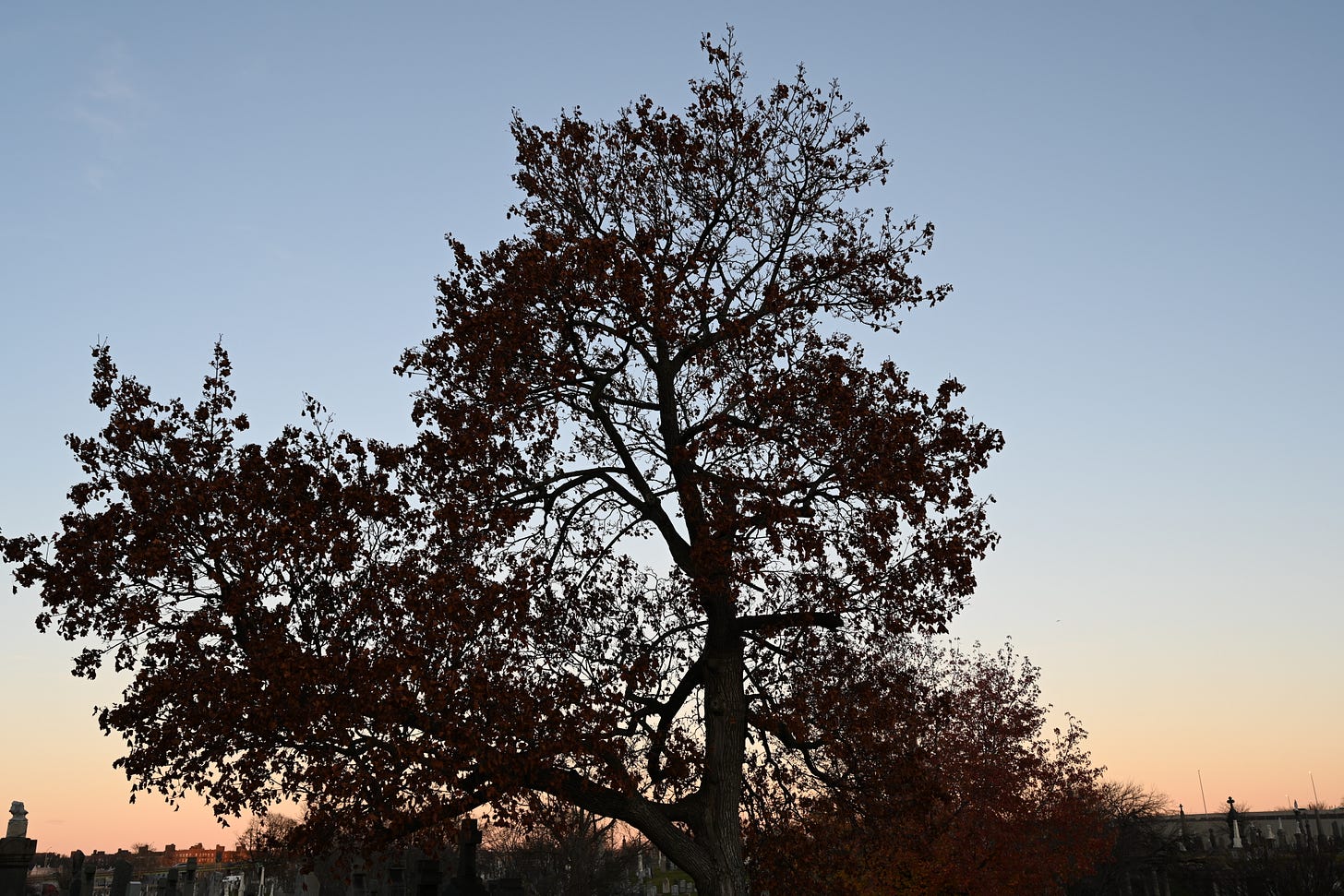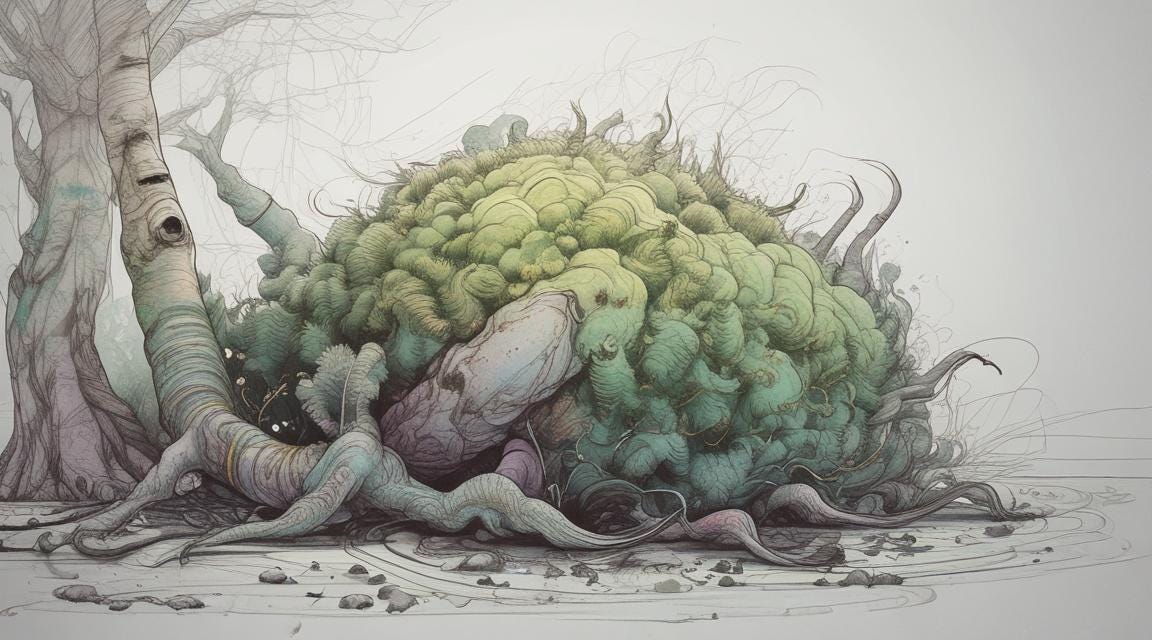Now that all the novelty has worn off, I’m kind of starting to hate AI art, but I can’t really put my finger on why.
AI art is not real art. It’ll do the job for an article thumbnail in place of a cheesy stock photo, but it’s not art. Art is a human achievement. A machine imitation will never speak to a living soul in the same way.
This is incontrovertible. What I want to examine is why.
The argument that I hear most often (which I mentioned above) is that machines are only capable of plagiarism. The way AI ‘artists’ work is by analyzing all the information that is available to them and then mashing it together as convincingly as it can in response to a prompt.
Now, there’s something kind of appalling about the ‘on-demand’ aspect of this. It’s true that all it does is distill what other, real artists have created and spit out its own amalgamation of it. That machines don’t really create anything at all, since they can’t put out more than they are given.
As true as this is, the ‘plagiarism’ factor is kind of an issue. Humans do the same thing. We learn by imitating. Writers become better writers by reading. When you’re learning how to play an instrument, before you start writing your own songs, you learn to play ones that other people have written.
Human artists distill large quantities of information. We cannot fully create something unique. We cannot separate our own art from all the experiences we’ve ever had and all the art we’ve ever seen.
Maybe, then, what machines are missing is a definitive style. You can see the artist in a piece of art. Everyone has their own style, some mark that makes their work definitively theirs. This is one of the things that makes art so wonderful—that they give us an in-depth glimpse of the artist.
Even this quality, though, is not really unique to humans. Each one of these programs has its own art style. They’re versatile—you can tell one to make an image look hand-drawn or watercolor or watercolor or whatever and it’ll listen—but they still look distinct. Dall-E is cartoonish. Midjourney is photorealistic.
What the machines are missing is a soul. The reason is intangible. It points to something that we can’t quantify—the human spirit, or life force, or whatever you’d like to call it. That’s why we care about an artist’s work—because their work is a window into who they are, and thus, gives us a look at who we are also. When a machine does the same thing, it doesn’t speak to us in the same way.
If this extra part of us didn’t exist, if we were only our brains—a complicated web of neural pathways that’s indistinguishable from a machine apart from the fact that it’s made of flesh and blood—then we wouldn’t be able to tell the difference. Machine-created art would move us in the same way as human art, because it would be simply an aesthetic phenomenon that made no difference. But this hasn’t happened. Even if a machine manages to trick someone into thinking a human created it, once the person finds out that AI created it, the magic is gone.
There’s something about human involvement that just makes something seem more real. Take the photograph that I included at the beginning of this post:
It’s a picture I took of a real tree and a real sunset. To you, though, looking at it, it’s not a real sunset. It’s a machine rendering of a sunset that happened months ago, pixelated and illuminated on your phone or computer screen. If I told you it was AI generated, it would fall flat. What’s cool about it (at least to me) is that I took it.
The picture was kind of an accident, actually. I pressed the button on the camera, but I don’t really know how to take good pictures. I saw the tree, saw the sunset, said “that would probably be a good shot,” and then gave it a try.
The process of this photo’s creation could not have happened without the sky and the tree being exactly as they were at that exact moment, without me being where I was at that exact moment, and without the camera doing whatever it did at that moment to make it work. My decision was only one small part of it. Was I the ‘artist’?
Maybe if I painted the sunset I might have more of a claim to it. How the finished artwork comes out is highly dependent upon knowing the craft of painting (there is a craft to photography too, of course—I just don’t know it). You’re not relying on machinery; if you’re capturing a ‘real-life’ sunset, the choice of how to represent it is entirely yours.
Painting is kind of an accident, too. It is heavily reliant on an artist’s skill, of course. Just as reliant on how that artist sees the world. However, a painting seldom comes out exactly the way the artist intended at the outset. How much of it is their own intention, and how much of it is ‘the process’?
Perhaps this mystical process happens with machine-created art, too, and the divine order of the world has a hand in every nauseatingly-colorful rendering of a kitten mechanically shit out by ChatGPT.
Behold—my favorite of the Substack' image generator’s responses to the prompt “draw whatever you want.” It’s the closest thing I could think of to giving the machine full creative license to make whatever it wants.
It’s kind of cool, I guess, in a novel sort of way, to see how a machine ‘thinks.’ It’s a nice-looking image. If a human created it, I would wonder what it means.
It could be argued that machines have some kind of ‘creative’ power. They use the ideas they’ve been fed to create something that’s never been seen before. At the very least, they are pumping out unique images every single time.
Unfortunately, I just don’t care what they have to say.





“And it makes me wonder . . .” Led Zeppelin (1971)
A lot of the AI art seems like a glorified search engine, but it's great. I use it all the time. I love the cartoonishness of Dall-E since that's the tone I'm often going for...